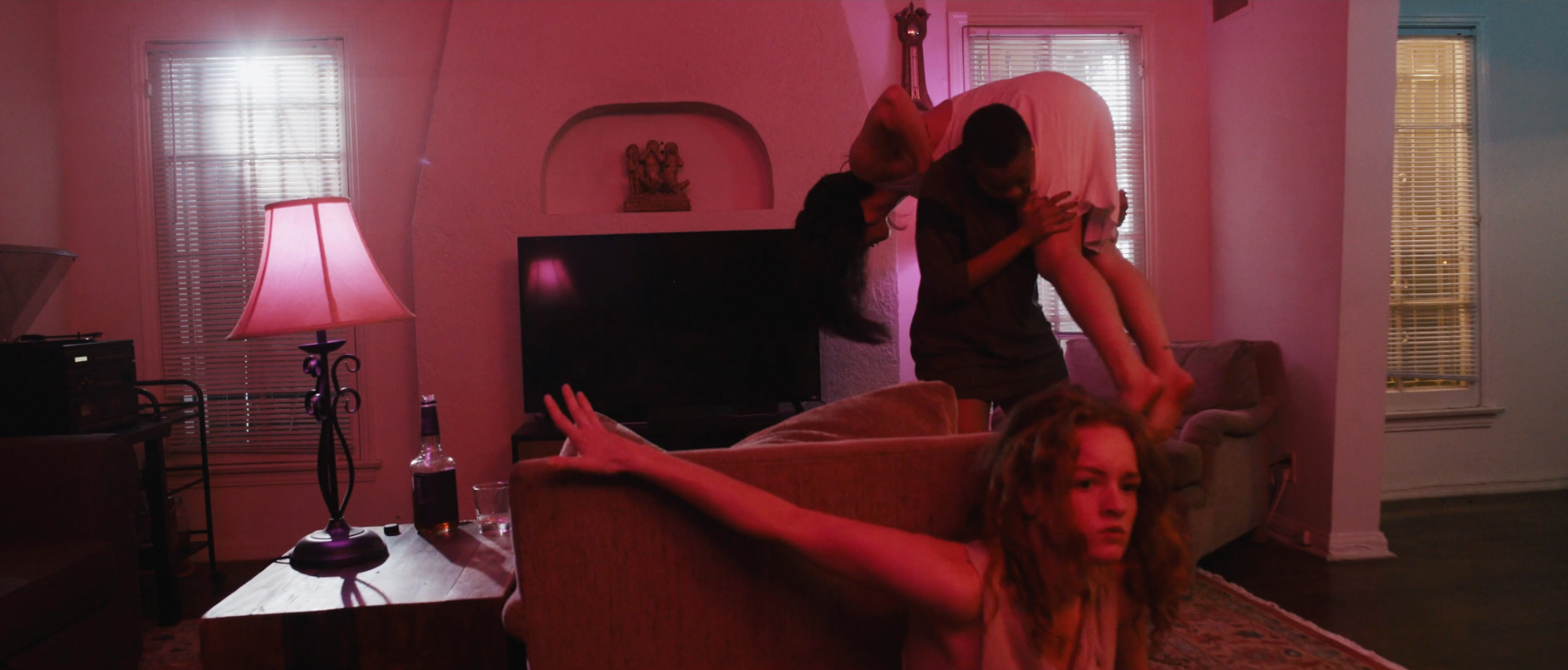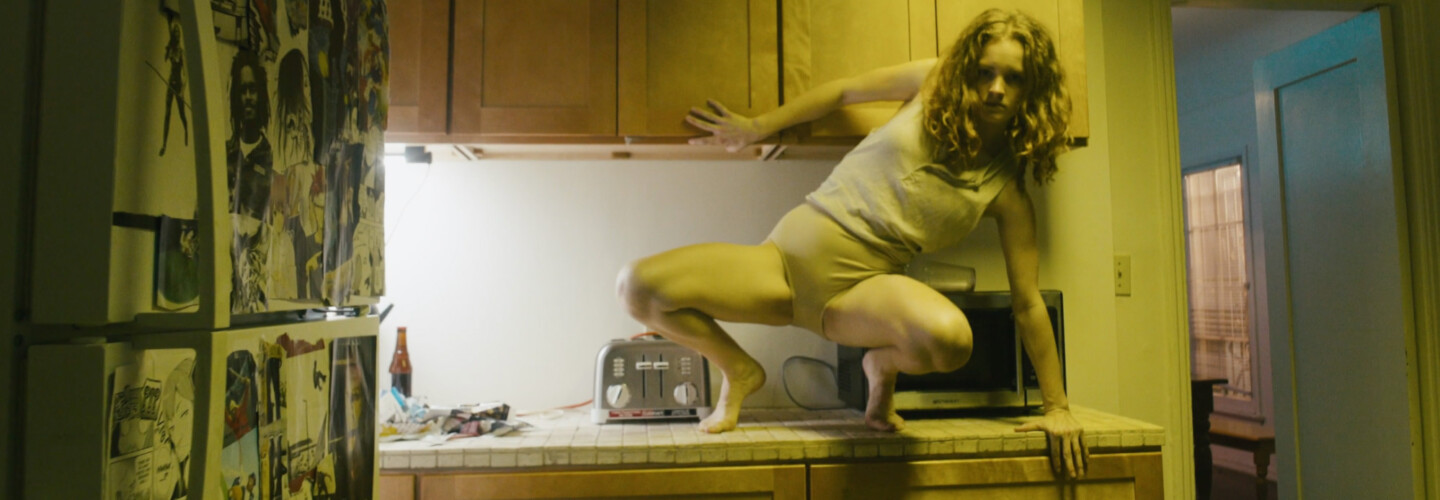
Exploring themes of permeance, haunting, and experience, Los Angeles filmmaker Daniel Gootnick takes us on a tour through a strange enigmatic house, providing glimpses into lives past and present along the way in one-shot dance short Different / Sleep. DN caught up with Daniel to discover how he used a mixture of dramatic lighting and bold choreography to convey the dark beauty of a space both empty and inhabited.
What galvanised the idea for this experimental, one-shot dance short?
I was working for a music video/commercial production company when I originally came up with the concept for Different / Sleep. I was inspired by the aesthetic of music videos, primarily hip-hop videos with similar tones that relied heavily on Steadicam.
My vision started with a string of visuals that eventually found their footing, it seems, a couple days before the shoot. From the start, I knew I wanted the video to be one shot and focus heavily on movement and dancers. I had the image of a strange, stoic girl on a kitchen counter in my mind as the camera pushed in to her. I also had the visual of the living room dance sequence and the same-sex couple kissing at the bottom of the staircase. That’s what I started with and I wanted to translate the visuals onto the screen and do it dynamically.
From there, I began to expand. What was the story I wanted to tell? I decided to make the dramatic scenes fragmented and seemingly unrelated, only offering certain glimpses to the viewer. Eventually, I developed the premise of dancers as spirit guides, moving the viewer on a journey through a house that has been inhabited by different people at various times. The journey takes place in a literal house but also suggests a journey exploring the humanity and drama that transpires in spaces people inhabit in general.

How did the project develop from there?
As I was still connecting the pieces, I met with my DP Hunter Gulan, to share my visuals and exchange ideas. He loved the challenge of doing a one-shot video with different atmospheric scenes. I trusted him because his work speaks for himself. After that, I reached out to Ashley Robicheaux who I knew from school in New York. She is literally one of the most dedicated and talented artists I know and a dear friend. She wanted to play the lead dancer and choreograph the piece, so Hunter, Robi, and I worked together to figure out logistics.
I locked down shooting at my brother’s house. The three of us went to the house and mapped out how we would shoot it. I wanted to make sure to create a space that was very welcoming to collaboration, ideas and feedback. It’s important for me that collaborators contribute because people have amazing voices that need to be expressed in the collective work. I’m a big advocate of that.
After doing a “dry” rehearsal, I finalized logistics. Confirmed dancers and actors and crew online and through friends. I brought in my amazing brother Ari to help art direct. I put down a little bit of money to lock down equipment (we used a Sony a7S II to shoot the video) and other production expenses.
I wanted to make sure to create a space that was very welcoming to collaboration, ideas and feedback.
In what ways did the various scenarios playing out in each room inform Robi’s choreography?
Robi and I wanted the choreography to reflect the tone and energy of the characters in the various scenes. In rooms where the dancers were accompanying a main character, they served as the physical manifestation of the character or responded to their energy. The dancers were also the bridge-way between the different scenarios, adding a second layer to the house.
The first time we see Robi on the counter she is alone, and moves smoothly into the house to establish that these are our ‘spirit guides’. In the living room, Robi wanted Shauna to emulate the static nature and energy of the television, a contrast to the haunting stillness of the man. Following an intimate interaction between the two boys on the stairs, we find Sierra crawling on the floor, bringing us back to the idea of the otherness. She moves us from an intimate interaction to a traumatic bathroom scene. For the man working furiously in the red ‘office’, Robi wanted the movements to be ‘weirdly frustrated’ to convey the internal turmoil of the character confronting his work.


Lastly, the culminating dance scene is when the energy explodes. It is essentially a ‘dance break’ and response to all the intense energy built up in the other scenes. This time, instead of leading the camera to an experience or interacting with characters, the dancers become the main focal point without the previous actors in the space. After the scene, Robi becomes a passive observer to the bickering couple and leads us back to where we established the ‘spirit guides’. She is the all-seeing entity of the house.
Could you tell us more about the thinking behind your lighting strategy for the house and the dramatic colour shifts between rooms?
Tonally, the colors represent what took place in the rooms and informed the camera movements and choreography. I wanted the film to start in green/yellow hues so it could be gritty and establish the overall dark tone of the piece. We cast the dining room in blue to create something more poetic as the camera flows with Robi (the dancer) and later explores a scene with the couple that feels more real and natural.
We choose red for the living room and upstairs ‘office’ to create an off-putting feeling. There is something really uncomfortable about seeing a man in a bathrobe watching TV in a sharply lit red room. We blasted lights through the windows to mimic the moonlight which added even more contrast to an already strange atmosphere. The red living room also later conveys the static energy of the dancers when they culminate together for their ‘dance break’. The staircase is purple and moody because it reflects a smooth transition between scenes and when we return to the kitchen at the end of the piece, it feels like we’ve encountered a bizarre experience in a perhaps abandoned space.

There is something really uncomfortable about seeing a man in a bathrobe watching TV in a sharply lit red room.
Did the one-shot nature of Different / Sleep require that everything was locked down on the day of the shoot or was there still room for improvisation? How many attempts did it take?
A lot of what you see in the final piece happened organically and collaboratively the day of the shoot. The cast and crew made some amazing choices and brought some amazing ideas to the plate that we ran with.
We did about 10 different takes and every time we ran a take, something went wrong. Sometimes it was someone caught in the frame and other times it was the camera or actor moving too fast or slow. It was challenging and important to keep morale high, but after we wrapped, we were able to immediately share the final take on playback that everyone got excited about.
How straight forward was post?
In post, Hunter did very minor color correction (the lights were pretty aggressive) and I worked closely with my best friend and college roommate, Jamie Eblen, to score the film. I gave him some audio references- including some Radiohead tracks and some other obscure ambient songs and let him run with it. It took about two months of experimentation and restructuring before we were happy with what we had.
Do you have any new projects in the works?
Right now I’m trying to get a one-act play that I wrote up and running. It features three actors and explores themes of sexuality, identity, and maturity. The story is told primarily through monologues and will feature movement choreography on a bare-bones stage. I also want to shoot a fashion film where I combine an urban street aesthetic with a western aesthetic. It’s going to be really different and I’m currently aligning myself with the right people to bring it to life.


